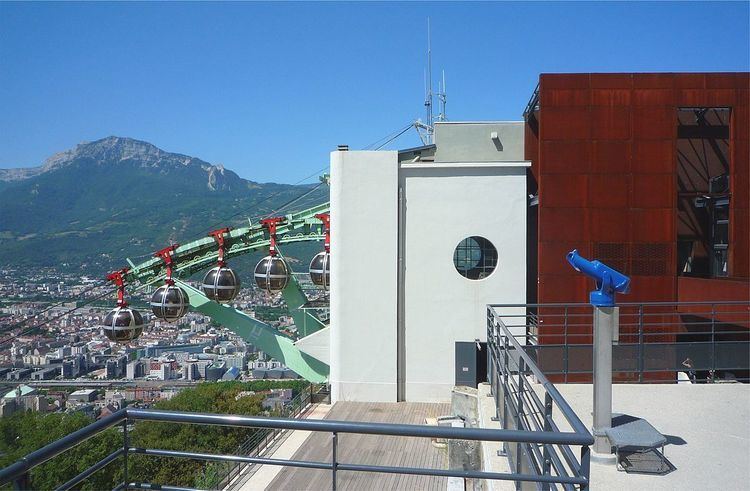Phone +33 4 76 44 33 65 | ||
 | ||
Similar Bastille, Musée de l'Ancien Évêché, Muséum d'Histoire Naturelle, Musée dauphinois, Grenoble Archaeological Museum Profiles | ||
The grenoble bastille cable car the bubbles may 2015 full hd
The Grenoble-Bastille cable car (French: Téléphérique de Grenoble Bastille), also affectionately known as Les bulles (English: the bubbles), is a cable car in the French city of Grenoble. It links the city centre with the Bastille, a former fortress overlooking the city.
Contents
- The grenoble bastille cable car the bubbles may 2015 full hd
- Grenoble bastille cable car
- History
- Stations
- Cabins
- Figures
- Panoramic images
- Works cited
- References
The line was inaugurated on 29 September 1934.
Grenoble bastille cable car
History
In 1934 cable cars were no longer an innovation. The cable car at the Aiguille du Midi had been in existence for ten years, the one at Salève for two; by that time Europe had a sizeable number. Even in Grenoble, a cable transportation system existed between Mount Jalla and the area of Porte de France since 1875, used to transport limestone from the quarries to the cement industry.
In Grenoble, the desire for openness and expansion of the city led to its mayor at the time, Paul Mistral, to successfully organize the Exposition internationale de la houille blanche (International exposition of white coal) in 1925, and subsequently to acquire land for the city's future airport. In 1930 together with the vice-chairman of the chamber of tourism, Paul Michoud, he planned the world's first urban cable car in the city. The site of the Bastille overlooking the Grenoble area was naturally chosen to become a tourist attraction. The site, fortified a century earlier by General Haxo, had a natural promontory offering a 360° panoramic view.
Stations
The architect, Jean Benoit, designed the stations. The work was entrusted to the Franco-German consortium Bleichert, Neyret-Beylié, Para and Milliat. The choice of the location of upper station was not a problem, it had to be close to the barracks of the dungeon, which was transformed into a restaurant. The site of the lower station was between the Jardin des dauphins and the Jardin de ville. It was finally decided that the lower station would be placed near the Jardin de ville, on the banks of the Isère. Its architectural design took elements of the Tour de l'Isle on the opposite bank, and a covered bridge was constructed across the road. In 1959, a circular extension was added to the lower station, and was used as a waiting room with a capacity of one hundred people.
By 1975 it had fallen behind building standards; and its ageing equipment and falling attendance convinced the municipality of Grenoble to demolish the lower station and rebuild it. The cables of 1967 were however preserved. The local architectural firm Groupe 6 was mandated for the design. The wiring and cabins were entrusted to Poma, and inaugurated under a year later in September 1976. The new station was built with big glass windows, like the new cabins, and on the other side of the road. A central pillar containing the engine is topped by a steel frame and cube-shaped glass.
For its part, the upper station was not changed, but was rearranged to receive the new continuously rotating mechanisms, the two huge 46-tons counterweights of the supporting cables, and finally the 24-ton counterweight of traction cable.
In September 2005, access was provided for the disabled enabling them to use the cable car; the fort itself had new elevators installed to the same ends.
Cabins
Figures
Panoramic images
In the foreground is the Isère river and behind that the Drac river. The strait avenue is the 8 km long Cours Jean Jaurès which finishes at the Place Hubert Dubedout. In the background are the Vercors mountains, and in front of the Isère the Chartreuse mountains (to which the Bastille belongs).
